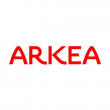Moscow reforms will “fundamentally change” Russian markets
The upcoming IPO of Russia’s Moscow Exchange is just one step in a titanic effort to transform Russia’s capital markets and attract attention from international investors – and it may not be the most important one, according to Serge Alexandre, electronic trading services at Russian broker Otkritie.
“There have been huge investments from the exchange,” said Alexandre. “The need for more IPOs on the domestic Russian market is vital. But the real crunch is the establishment of a central securities depository, which means that US investors will find it far cheaper and faster to access Russia, and the switch to T+2 settlement later this year, which will fundamentally change the nature of doing business in Russia.”
The Russian government has been keen in recent years to promote Moscow as a major international financial centre. To that end, the country’s RTS and MICEX exchanges were merged in 2011 to create the Moscow Exchange. Then in November 2012, a CSD was created by Russia’s NSD, which is also part of the Moscow Exchange.
That was important because under US Securities and Exchange Commission rule 17F7, US investors had to place assets with a depository. Without a CSD, settlement arrangements for Russia were widely viewed by outsiders as complicated, expensive and inefficient. A CSD provides transparency over securities ownership and can help reduce risk in the event of a bad trade. In December, Russia’s NSD received further support when the Russian Federal Markets Service agreed to provide information regarding Russian issuers and securities issues to NSD so that it can fulfil its role more effectively.
Equally important for the future is the planned switch of the entire Russian market to T+2 settlement later this year. At present, Russia operates a T+0 settlement cycle, which means that trades settle immediately at the point of the transaction. This system is a major obstacle to many foreign investors, because the seller must be able to pay at the moment of the transaction. At present, most of Europe uses T+3 settlement, with the exception of Germany, which operates on a T+2 basis. But the Moscow Exchange is due to move 20 of the most liquid stocks from its MICEX order book to T+2 settlement next month, with the remainder due to follow by the end of July.
“This is a major change,” said Alexandre. “With the rising levels of automation and STP in post-trade processing, several European countries are already looking at T+2 settlement, which can help reduce risk because the assets have to be held for less days. Moscow Exchange is positioning itself for the future.”
While Alexandre suggests it is doubtful whether the planned switch can take place in February as planned, citing lack of preparedness among market participants, he does believe it can comfortably be achieved well before the end of this year. However, despite the internal market reforms the Moscow Exchange must still compete with the London Stock Exchange’s international order book for IPO listings. At present, the IOB is overwhelmingly dominated by Russian companies, while the number of IPOs in Russia has fallen from 14 in 2007 to just 1 in 2011 and zero in 2012, according to figures provided by PricewaterhouseCoopers.
Part of the problem for Moscow Exchange is that the IOB is often seen as a way for companies to gain wider exposure than they would on the domestic Russian market. Its advantages include the ability to trade in US dollars, the T+3 settlement cycle, potentially deeper liquidity at the closing auction, and its inclusion in the MSCI Russia Index, according to Otkritie. But the company’s research also suggests that investors should still visit the local Russian market, because not all Russian stocks have a depository receipt; it has estimated that the IOB still only represents 20% of the available trading opportunity in Russia. Either way, Moscow’s plan to IPO on the domestic bourse has been widely seen as a statement intended to encourage liquidity back to Russia’s home markets.
Developments in technology are also helping to make connectivity to Russia an easier proposition for international investors keen to try their luck in the BRIC market. Earlier this month, technology and connectivity provider TMX Atrium launched a new high-speed route from Frankfurt to Moscow, so traders based there can also take advantage of the link to connect to Russia faster than before. Meanwhile in September, BT set out its plans to expand its reach into the country through a new network link with Rostelecom, Russia’s national telecoms operator, improving the opportunities for foreign institutional investors to access Russia’s markets through the BT Radianz Cloud.
“It will take time, but Russia is changing,” said Alexandre. “Much of the heavy lifting has already been done. It’s now more a question of gradual refinements, and of investors getting used to trading in Moscow. Russia is open for business.”












































